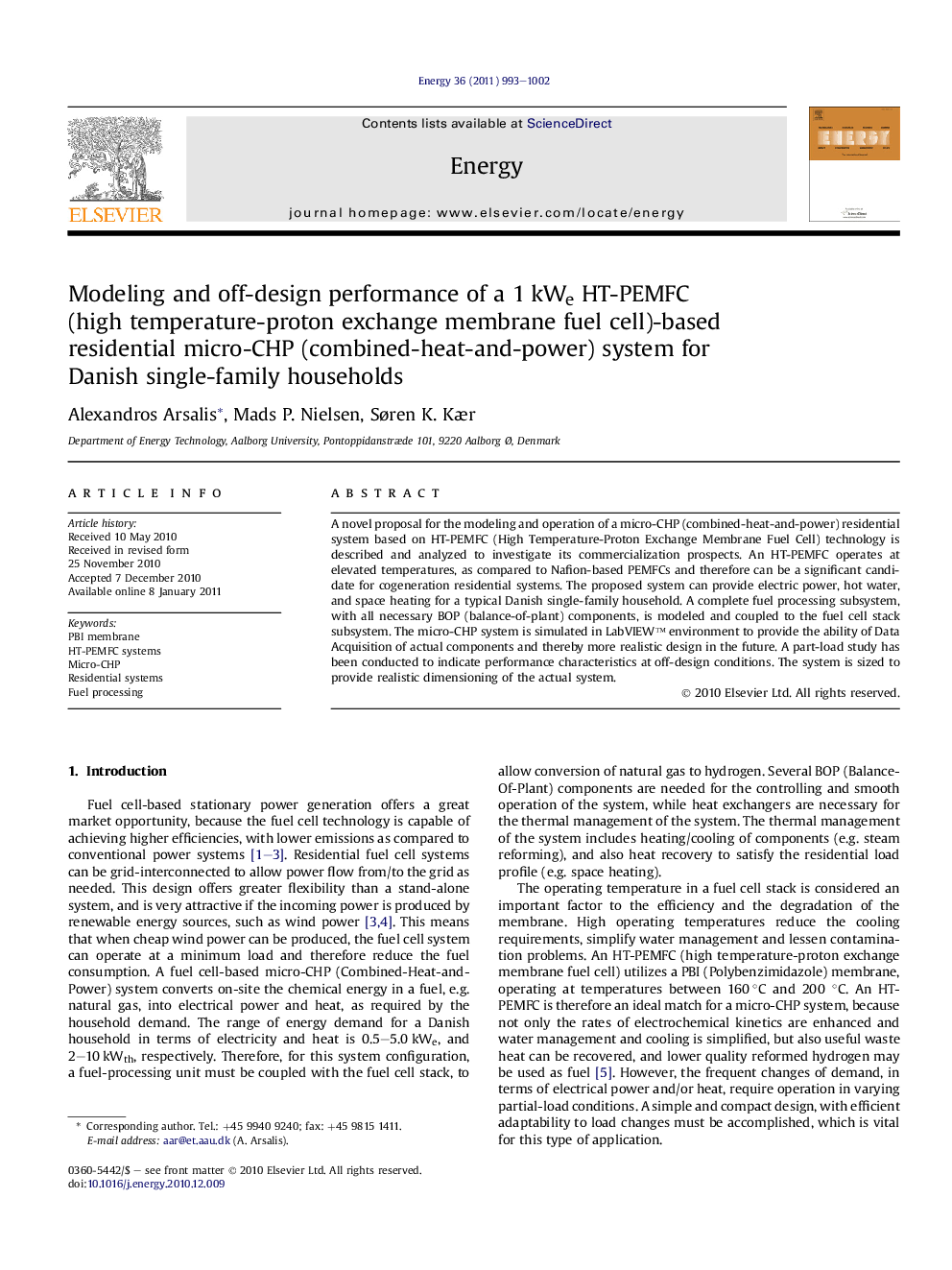| کد مقاله | کد نشریه | سال انتشار | مقاله انگلیسی | نسخه تمام متن |
|---|---|---|---|---|
| 1734635 | 1016160 | 2011 | 10 صفحه PDF | دانلود رایگان |

A novel proposal for the modeling and operation of a micro-CHP (combined-heat-and-power) residential system based on HT-PEMFC (High Temperature-Proton Exchange Membrane Fuel Cell) technology is described and analyzed to investigate its commercialization prospects. An HT-PEMFC operates at elevated temperatures, as compared to Nafion-based PEMFCs and therefore can be a significant candidate for cogeneration residential systems. The proposed system can provide electric power, hot water, and space heating for a typical Danish single-family household. A complete fuel processing subsystem, with all necessary BOP (balance-of-plant) components, is modeled and coupled to the fuel cell stack subsystem. The micro-CHP system is simulated in LabVIEW™ environment to provide the ability of Data Acquisition of actual components and thereby more realistic design in the future. A part-load study has been conducted to indicate performance characteristics at off-design conditions. The system is sized to provide realistic dimensioning of the actual system.
Research highlights
► An HT-PEMFC-based micro-CHP system is modeled in LabVIEW to provide a basis for future experimental calculations.
► We examine operation in various loads to indicate performance characteristics at off-design conditions.
► An electrical efficiency varying from 45.4% (25%-load) to 38.8% (full-load) was calculated. The corresponding total efficiency was around 95.2%.
Journal: Energy - Volume 36, Issue 2, February 2011, Pages 993–1002